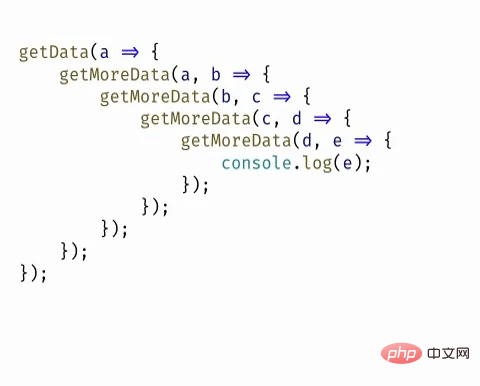
This article will introduce you to asynchronous programming in JavaScript. It has certain reference value. Friends in need can refer to it. I hope it will be helpful to everyone.

Asynchronous means non-synchronous....
This section may be a bit boring, but it is a very important concept in JavaScript and is very useful. It is necessary to learn.
$.ajax({
url: "www.xx.com/api",
async: false, // true
success: function(result) {
console.log(result);
},
});// 异步批量更新DOM(vue-nextTick)
// <p id="app">{{num}}</p>
new Vue({
el: "#app",
data: {
num: 0,
},
mounted() {
let dom = document.getElementById("app");
while (this.num !== 100) {
this.num++;
}
console.log("Vue num=" + this.num, "DOM num=" + dom.innerHTML);
// Vue num=100,DOM num=0
// nextTick or setTimeout
},
});Cause: single thread (one point in time, only do one thing), the browser's JS engine is single threaded caused.
Single thread means that there is only one thread responsible for interpreting and executing IavaScript code in the JS engine. You might as well call it the main thread.
The so-called single thread means that only one task can be completed at a time. If there are multiple tasks, they must be queued. The previous task is completed before the next task is executed.
First take a look at the thread diagram of the browser kernel:

Among them, The rendering thread and the JS thread are mutually exclusive .
Suppose there are two functions, one modifying and one deleting, operating a DOM node at the same time. If there are multiple threads, if the two threads are executed at the same time, there will definitely be a deadlock and there will be problems.
Why JS should be designed as single-threaded, because of the special environment of the browser.
Advantages and disadvantages of single thread:
The advantage of this mode is that it is relatively simple to implement and the execution environment is relatively simple; The disadvantage is that as long as one task takes a long time, the subsequent Tasks must be queued and waited, which will delay the execution of the entire program. Common browser unresponsiveness (suspended death) is often caused by a certain piece of Javascript code running for a long time (such as an infinite loop), causing the entire page to get stuck in this place and other tasks cannot be performed.
Common blockage (infinite loop):
while (true) {}JS was originally designed to be a script language that runs in the browser, so we didn’t want to make it so complicated, so we just designed It has become a single thread, that is, can only do one thing at a time.
In order to solve single-thread blockingthis shortcoming: asynchronous is generated.
Take the example of eating instant noodles:
Watching TV is an asynchronous operation, and the sound of the kettle is a callback function.
Most of the code in JS is executed synchronously. Only a few functions are executed asynchronously. Asynchronously executed code requires asynchronous programming. .
setTimeout(() => {
console.log("log2");
}, 0);
console.log("log1");
// ?? log1 log2Characteristics of asynchronous code: It is not executed immediately, but needs to wait and be executed at a certain point in the future.
| Synchronous code | Asynchronous code |
|---|---|
##<script>Code | Network request (Ajax)|
| Timer (setTimeout, setInterval) | |
| Promise(then) | |
// 注意到click方法中是一个函数而不是一个变量
// 它就是回调函数
$("#btn_1").click(function() {
alert("Btn 1 Clicked");
});
// 或者
function click() {
// 它就是回调函数
alert("Btn 1 Clicked");
}
$("#btn_1").click(click);
function getOneNews() {
$.ajax({
url: topicsUrl,
success: function(res) {
let id = res.data[0].id;
$.ajax({
url: topicOneUrl + id,
success: function(ress) {
console.log(ress);
render(ress.data);
},
});
},
});
}function getOneNews() {
axios
.get(topicsUrl)
.then(function(response) {
let id = response.data.data[0].id;
return axios.get(topicOneUrl + id);
})
.then((res) => {
render(res.data.data);
})
.catch(function(error) {
console.log(error);
});
}async function getOneNews() {
let listData = await axios.get(topicsUrl);
let id = listData.data.data[0].id;
let data = await axios.get(topicOneUrl + id);
render(data.data.data);
}| Macro tasks (not in a hurry) | Micro tasks (in a hurry) |
|---|---|
Overall code | |